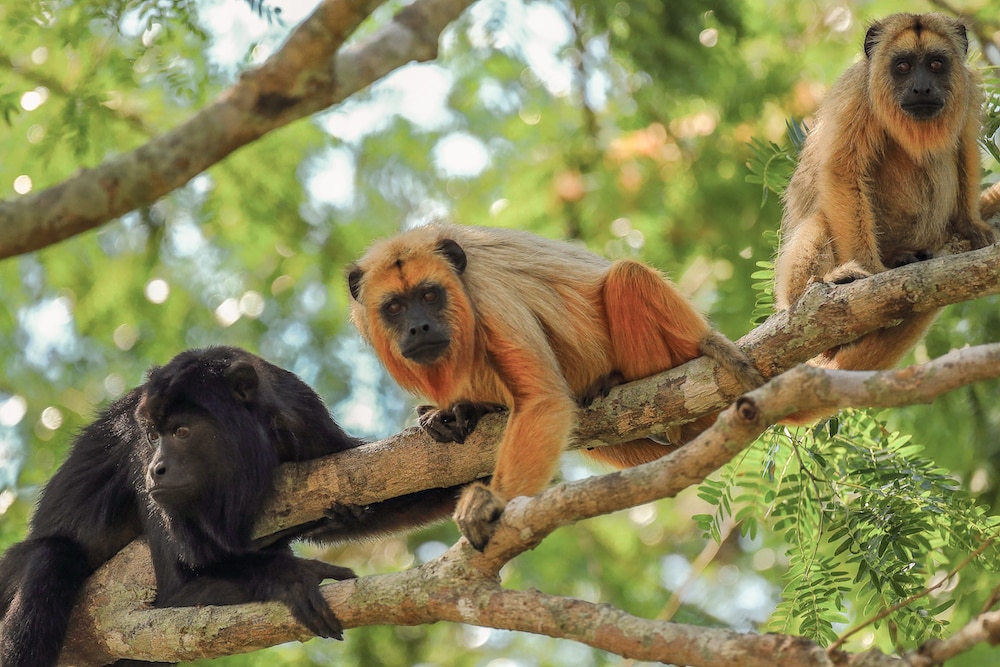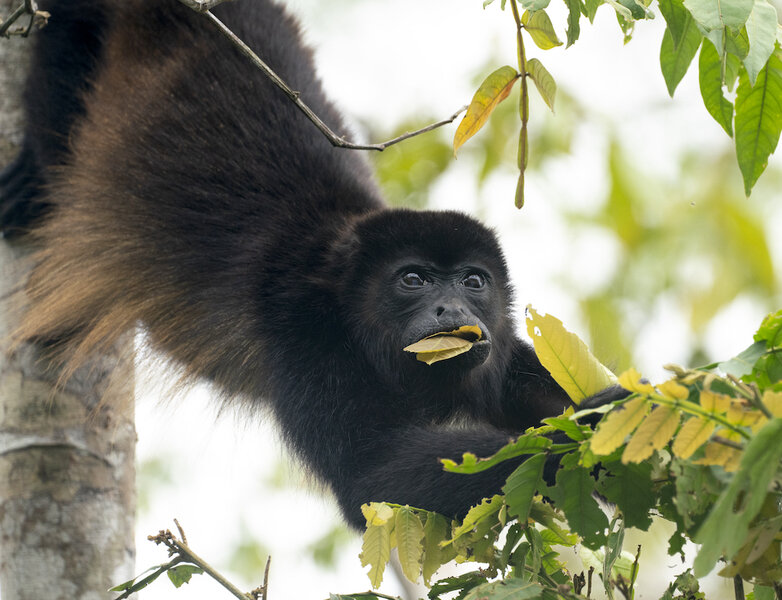Create a free profile to get unlimited access to exclusive videos, sweepstakes, and more!
Monkeying around isn’t just for fun, it also reduces conflict
Making friends is hard, especially if you're a monkey.

When we’re young, play time is as natural as breathing. Then when we get older, something seems to shift. It might be the level of responsibility, or that we simply have fewer opportunities to engage in play with our peers. Whatever the reason, some of that youthful exuberance is lost. As far as we can tell, the same trend occurs in non-human animals as well.
That’s certainly the case for howler monkeys in the rainforests of Mexico and Costa Rica. Play time is mostly reserved for juvenile monkeys or the adults who are teaching them, but that’s not always the case. Norberto Asensio from the Department of Clinical and Healthy Psychology and Research Methodology at the University of Basque Country, and colleagues, found that adult howler monkeys play with one another as a way of reducing tension and conflict. Their findings were published in the journal Animal Behavior.
Scientists observed the Mexican howler monkey and the golden-mantled howler monkey at the Los Tustlas Biosphere Reserve in Mexico and the Guanacaste Conservation Area in Costa Rica for more than 1800 hours to get a sense of when and why they play.
Howler monkeys are mostly sedentary as a consequence of their leafy diet. Most of their time is spent either eating leaves or resting while they digest. As such, engaging in play is an energy expensive activity they don’t often do. In fact, total play time amounted to less than 1% of the overall observations. That suggests that when they do play, there’s a pretty good reason for it.
Unlike some other primates, howler monkeys don’t have rigid social hierarchies they can refer to when faced with a conflict, and they don’t do social grooming as a way of establishing and maintaining relationships. This poses a potential problem when the likelihood of a fight increases, as is the case in the presence of rare and desired resources.
"Through social play, adults could decide who eats first, establish a subtle hierarchical order of food access, play would be a substitute for a fight here to decide who wins without aggression," Asensio told SYFY WIRE. "Play also relaxes a situation that is inherently competitive."
While howler monkeys mostly eat leaves, they will forage on fruit when the opportunity arises. In those cases, fruit becomes a prized possession the monkeys will defend from others in their group. Researchers found that when fruit is more available, levels of play among adult howlers increase. It’s thought that play time fills the gap where social hierarchies or social grooming would be. It’s a way of reminding everyone that they’re friends or showcasing physical abilities in a non-violent way.
Play most often presented with monkeys hanging from their tails and making faces at one another, which, honestly, we can understand.
"It is one of the communicative signals animals use to say, 'Hey, I come with friendly intentions, this won't be an aggression.' It consists of showing the teeth with a relaxed mouth. Another play sign is shaking the head. Laughing would be a play sign in humans and howler monkeys do have something similar if you are close enough to hear it," Asensio said.
Importantly, researchers did not see any increase in play between adults and juveniles in the presence of increased fruit availability, likely because adults don’t view juveniles as a threat to their resources. This appears to suggest that increased play is not a direct result of additional energy provided by high-energy fruits.
Moreover, play also increased as a result of larger group sizes. The more monkeys there are in a given area, the more likely adults are to play with one another. There are two potential explanations for that relationship. The first is that larger groups present more opportunities for play. Essentially, you’re more likely to find a friend worth playing with in a larger group setting. The second is that larger groups have a larger opportunity for conflict and play time once again emerges as a way to manage that.
"It could reasonably be both of these reasons, opportunity plus necessity. Opportunities come with more possibilities to choose and individual preferences may appear, and the necessity may come in an attempt to get to know everyone in your group and keep cohesion," Asensio said.
In some ways, that might mean that howler monkeys aren’t all that different from us. Spending casual play time with friends can sometimes feel energy expensive and, while we do have social hierarchies, some people believe the invention of sports and other games emerged from the desire to display physical prowess without engaging in violent conflict.
Maybe the next time you get into an altercation you should spin up a game of tag or something and just see what happens.



























